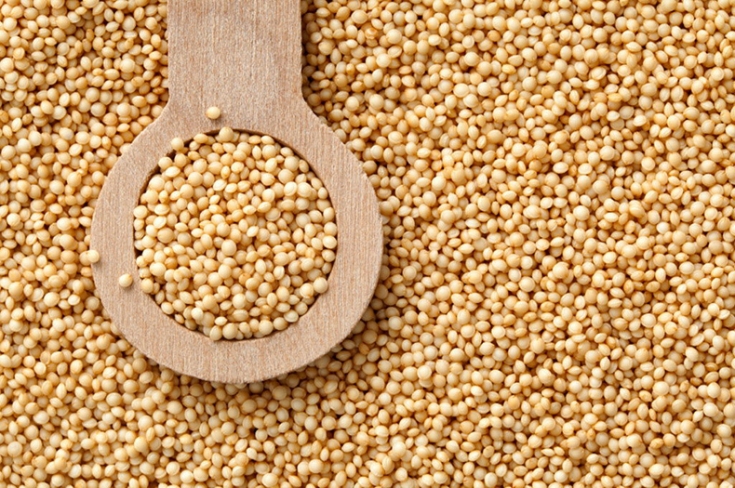These 6 cereals were an indispensable part of the diet of many ancient peoples. In particular, the Ethiopians, Incas, Egyptians, Aztecs, etc. diversified their menu with these varieties of grain. However, today the cereals, which will be discussed later, are completely undeservedly forgotten. In addition, they belong to the category of complex carbohydrates, which means that they can be safely included in the diet. Esthet-portal.com. advises to pay closer attention to these cereals.
6 cereals: extremely useful, but forgotten
Teff
"Pedigree" This cereal originates in Ethiopia and is cultivated mainly in Africa.
Abyssinian field grass (another name for these rather small, but very nutritious grains) contains a lot of fiber and calcium, has a taste similar to nutty.
This cereal will especially appeal to the apologists for the gluten-free diet. The inhabitants of Africa have long been preparing flatbreads from teff, cooking porridge, and delicious pancakes are baked from grains ground into flour.
Quinoa
This is a cereal crop that grows high in the Andes. It should be noted that today quinoa (or "quinoa" and even "kinua") is an essential element of the diet in the countries of South America, just as it was one of the three main food sources for the Incas in antiquity.
Quinoa is one of the twenty healthiest foods on the planet. It tastes like unpolished rice, and the grains are similar to buckwheat, although they differ in color. So, they can be both black and beige and even red.
Quinoa is rich in proteins, essential amino acids (their composition, by the way, is identical to cow's milk), fiber, calcium, B vitamins, contains complex carbohydrates and is rich in phosphorus.
Spelled
This variety of wheat is considered "black caviar". among cereals. So, its grains are endowed with greater value than grains of ordinary wheat. Spelled is incredibly useful, vitamins and microelements are balanced in it, which are of great value for the human body. And, by the way, they are perfectly preserved in the case of product processing. Porridge cooked from this variety of wheat has a nutty flavor and a beautiful creamy color.
The cultivation of spelled has been known since 5000 BC. e. On the basis of an ancient grain crop, modern varieties of wheat were bred. In Egypt, he was called Khorasan, which means "soul of the earth." Kamut contains a large amount of protein (twice as much as in ordinary wheat). The cereal is distinguished by a high content of minerals and vitamins. Kamut is rich in selenium, which protects our body from aging, and lipids – "suppliers" energy. The taste of this grain crop is oily and somewhat sweet. Kamut grains do not need to be soaked before cooking (as is required in the case of ordinary wheat), as it cooks quickly.
The cultural history of kamut was restored only in the middle of the 20th century, when about fifty grains of this cereal were discovered during excavations. xxxx>
Amaranth
Do not rush to be disappointed by the small size of the cereal, since the healing properties of this Peruvian baby can truly be called miraculous: they are so diverse and beneficial to human health. For example, the protein in it – twice as much as brown rice and contains complex carbohydrates. Amaranth is incredibly rich in calcium, potassium, phosphorus, iron and contains essential amino acids identical to those found in meat or eggs.
This cereal has been cultivated for at least 8 thousand years in Mexico and South America, but the Spanish conquest put an end to this tradition. Today, the cereal is especially popular among the inhabitants of the mountainous regions of India, China, Pakistan. Read also:
Read also:
Top 5 products for youthful skin






Add a comment